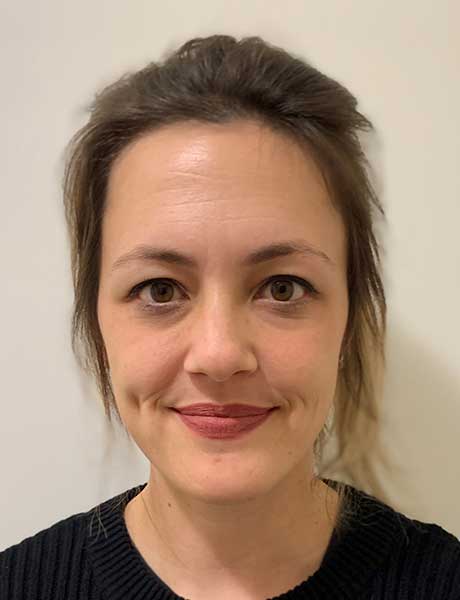Featured Image: fizkes on Shutterstock
The Australian College of Nursing (ACN) is dedicated to enhancing the leadership, communication and clinical skills for all nurses. The Emerging Nurse Leader (ENL) program gives nurses in the first six years of their career opportunities to showcase their knowledge and build their confidence as nurses.
ENL alumna Nicole Hibbert MACN used part of her program to look at nursing from the wider perspective and find how changes in our climate can affect our health in ways we do not expect.
Read her insights below.
What is mould?
As the rainy summer months start to ease, it is important to make sure everyone is checking their homes for mould. Mould is caused by bacteria and fungi and can cause significant health problems that nurses need to be aware of. It relies on ideal conditions to thrive, which includes a moist environment.
It can thrive in areas where ventilation is limited, such as tightened buildings, poor insulation, highly dense areas, volatile changes in weather and the quality of building material used within a building structure. These conditions allow a building to remain moist, providing the ideal environment for mould to flourish and expand throughout a building or household.
With the increased level of rain and flooding during the winter season in Australia and back-to-back La Niña seasons during summer, there has been endless opportunities for fungi to flourish. A recent study in Australia found that 48.9 per cent of the dwellings included in the study had mould (Coulburn & Miller, 2022).
Why should we be worried?
Mould impacts humans with increased respiratory symptoms, allergic symptoms and exacerbates asthmatic symptoms. The World Health Organization (WHO) commissioned a report in 2009 called “WHO Guidelines for Indoor Air Quality: Dampness and Mould” to investigate the impact of dampness and mould on peoples’ health (WHO, 2009).
The WHO found dampness in buildings increased the risk of adverse health impacts on a person’s respiratory systems, including an increase in coughing, wheezing, allergies, hypersensitivity pneumonitis and exacerbation of asthmatic symptoms.
According to NSW Health, those at greatest risk are people with pre-existing medical conditions, including asthma, allergies, respiratory conditions including chronic lung diseases, and people living with immunocompromised systems such as HIV infection, cancer (particularly chemotherapy), and organ transplant patients (NSW Health, 2022).
Recent research has indicated ongoing exposure may lead to irreversible hypersensitivity to mouldy and damp indoor conditions (Coulburn & Miller, 2022). However, more research is needed to fully understand the long-term impacts of mould on our health.
What is the nurse’s role in preventing mould-related illnesses?
During a holistic assessment of a patient, a nurse can gather a history to indicate whether the patient may have been exposed to mould. This is particularly important for those who suffer from respiratory illnesses, asthma and chronic conditions.
This can come from social history, understanding the population density of a house, and the type of dwelling a patient may be living in. Units and large complexes, being highly dense dwellings, will be more susceptible to mould flourishing.
Prevention is the key to avoiding adverse health impacts from mould. The key to prevention, as with many things is through education and awareness of where mould can potentially grow and flourish. When educating a patient, here are things to consider teaching:
- Educate about ventilation throughout the household
- Putting bathroom fans on when during showering to minimise humidity and moisture
- Ensure exhaust fans are on when doing laundry, drying clothes and moisture creating events
- When home, ensure windows are open if the weather allows to provide good ventilation and cool the on warmer days.
- To avoid humidity, avoid the use of humidifiers, gas heaters, fish tanks and indoor plants (NSW Health, 2022).
The best way to avoid mould is to create a house that is structured with open ventilation. However, this is not always feasible, and we cannot always control the mould levels in a consumer’s home. The key to success in avoiding health effects of mould is through education and prevention.
As nurses, we have the opportunity to educate patients on the impact of mould and empower our patients to prevent mould from developing. This is particularly important to those patients who suffer from respiratory conditions to help maintain a healthy life and management of their condition.
Nicole Hibbert MACN
Nicole Hibbert MACN is an Emerging Nurse Leader alumna working in Western Australia as a Registered Nurse. Nicole is passionate about a positive education experience throughout all stages of nursing. You can follow Nicole’s journey on LinkedIn.

References
Coulburn, L., & Miller, W. (2022). Prevalence, Risk Factors and Impacts Related to Mould-Affected Housing : An Australian Integrative Review.
NSW Health. (2022). Mould Factsheet. https://www.health.nsw.gov.au/environment/factsheets/Pages/mould.aspx
WHO, Regional Office for Europe. WHO Guidelines for Indoor Air Quality : Dampness and Mould, WHO Regional Office for Europe, 2009. ProQuest Ebook Central, https://ebookcentral.proquest.com/lib/ecu/detail.action?docID=483469.





